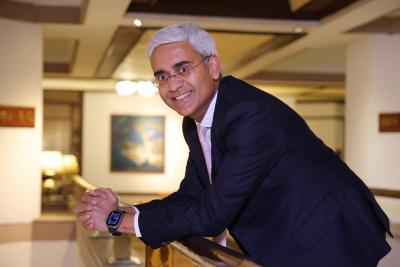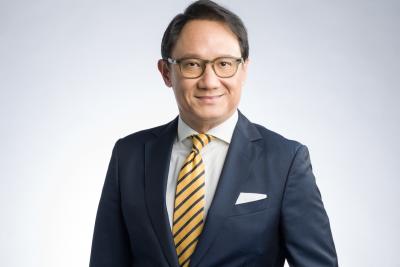Maybank Private’s Alice Tan on Taking a Global, Analytical and Diversified Perspective on Portfolio Allocation
Alice Tan is Head of Maybank Private and Head, Products and Investment Solutions at Maybank Singapore. In this role, she is responsible for the high-net-worth segment of Maybank Private and also the overall products and investment solutions proposition, and has been successfully growing the client base and expanding and upgrading the offering. Alice has 20 years of experience in asset management, portfolio management as well as investment consulting, having joined Maybank from a prominent role at Credit Suisse Asset Management in Singapore and having enjoyed an impressive career with a number of other big-name financial institutions. Hubbis recently conducted a Q&A with Alice to learn more about the Maybank offering and her views. She delivered very valuable insights on how investors can optimise their portfolios, how they should diversify their assets in terms of sectors, types and geographies, why they should increasingly allocate towards private and alternate assets, and what ESG means for decision-making. Alice’s erudite replies demonstrate the broad global perspective that Maybank is today offering its private clients and underscore the bank’s increasingly competitive proposition for Asia’s wealthy private clients.
How are you evolving the quality and type of advice you offer to clients?
The investment landscape is ever-changing and increasingly volatile. Maybank Private clients in Singapore, including high-net-worth individuals and family offices, tend to be more sophisticated, and look to us to preserve and grow their wealth over the long term. In line with the bank’s mission to Humanise Financial Services, we build a close-knit banking relationship with each and every client by understanding the individual’s background, investment objectives, risk profile and preferences. This will help our relationship managers (RM) to recommend a suite of solutions tailored for them and amass a wealth portfolio that is resilient to withstand market volatility.
Our focus is to constantly monitor for evolving investment trends and to mitigate down-side risk where possible. We do this by investing in our people and our technological platforms, scouting for best-in-class products, and aligning our performance and policies with the best interests of our clients at heart.
Maybank practises an open architecture in our product and solution sourcing, so that we can offer clients the best pricing and best execution. Our Investment Strategy team constantly publishes research articles and conducts webinars to address clients’ concerns over shock events, such as the Chinese tech regulatory clamp-down, the spike in US interest rates and the current Russia incursion into Ukraine. Our RMs play a pivotal role in reaching out to our clients with exciting investment opportunities or providing them with portfolio updates during times of uncertainty.
“As a bank with a full-fledged ASEAN presence, we deployed a strategy to leverage our universal banking model across our network to offer unique value propositions. Wealth management is an important business segment in our universal banking model, and we want to offer our customers a comprehensive suite of solutions across both their business and personal needs.”
As such, Maybank Private clients have the benefit of accessing a wide-range of information and financial services, such as economic and Forex research, business banking as well as insurance advisory. Therefore, what we offer is a holistic package that caters to every aspect of their financial management.
What advice would you offer clients today around how they structure their portfolios?
A core portfolio built for resilience is essential to portfolio construction. It would consist of global balanced asset funds, and/or a combination of fixed income and equity funds, or a global investment discretionary mandate. Private assets tend to be less liquid and longer-term in nature, and hence could be considered for the core portfolio. The core portfolio would only be strategically re-balanced based on macro changes.
For more tactical positioning, one could add satellite investments that would take advantage of short-term opportunities. This could include currency overlays, regional or thematic focused investments, or plays on credits and interest rates.
“The benefit of a core and satellite approach is to allow clients to capitalise on tactical investments without changing allocation to the core portfolio, which is meant to reflect the investor’s consistent and longer term allocations to the markets.”
What products or solutions would be worth considering to help them achieve specific outcomes?
For clients who wish to take a more hands-off approach to their investment decisions, Maybank has a stable of discretionary investment mandates. These include in-house global balanced mandates, investment mandate on Singapore REITs, as well as new economy investment mandate that is being actively managed by a third-party. Other investment offerings will depend on clients’ objectives, which may include investing in ESG-focused financial products, healthcare and real estate related assets. Maybank also offers direct access to exclusive private equity investments.
Within the satellite portfolio, clients are looking for ways to hedge against inflation and rising commodity prices as well as the increasingly volatile equity market. To address the needs, customised structured solutions like interest rate-linked Cap-Floor Floater payoff allows clients to enjoy a minimum return over the investment tenor while participating in future interest rate rises (in conjunction with inflation) up to a specified capped rate. On a tactical basis, clients may consider hedge funds to express a market neutral view as part of satellite allocation.
Regarding equities investing, clients who would like to capitalise on the higher market volatility or dispersion while expressing a market neutral view may consider a dispersion warrant. Risk from the dispersion warrant is mitigated due to the small capital outlay, and returns are insulated from conventional positive and negative underlying price movements which are instead measured by underlying performance dispersion from the average.
How are you looking to enhance your investment platform and services in the next 12 months?
Clients have varied investment needs. As such, investment solutions will have to go beyond the traditional equity and fixed income portfolios to cater to changing market cycles. Increasingly, alternatives such as private equity and real assets could enable clients to enhance overall return-risk profiles of their portfolios.
To offer differentiated and in some instances exclusive solutions, Maybank works closely with a panel of solution partners to drive product innovation.
An example of the outcome from the various partnerships is the ability to offer private equity investments in a structured note wrapper. This offers a plethora of benefits such as a reduced capital outlay, a faster route to market and exclusive private equity deals. In addition, we are looking to offer new investment or portfolio solutions through the digital platform which hopefully will enhance the investment experience and outcome for our clients.
Private Markets – are they more appealing than ever and what is Maybank doing in this sector?
Major central banks had floored interest rates and embarked on balance sheet expansion to deal with the Global Financial Crisis. The low interest rates have boosted market valuations for many years. The goldilocks situation of the economy and interest rate environment of being “not too hot, not too cold” has somewhat changed in the second half of 2021. Inflationary pressures began to build up from higher prices caused by supply chain disruptions. Central banks may now have to raise interest rates faster to avoid the risk of being behind the curve and to anchor long-term inflationary expectations. Adjustments in interest rate paths and expectations have resulted in much market volatility since the start of 2022.
In view of the above, investors are seeking alternative asset classes to diversify their portfolios from traditional equity and bond markets. These include investments in private markets which potentially can offer some benefits over public markets.
Private wealth clients are more likely to focus on longer-term returns that enable them to ride through market volatility in order to extract illiquidity premium inherent in private markets. With the investors becoming more knowledgeable, asset classes and investment strategies in private markets can be more varied. These alternative asset classes and strategies can help lower correlation to public markets, improve portfolio diversification and lead to more resilient returns over time.
Investors may want to invest in growth companies earlier than public investors. Companies are staying private for longer, including some of the most exciting rapid growth businesses. As mentioned, Maybank offers direct access to exclusive private equity investments. These are not easily accessible to investors outside of traditional private equity structures. These private companies need different types of shareholders, from early stage venture capital (VC) to late stage VC, and they may require long-term patient capital – “venture at scale” – to support them to reach the IPO stage and continue its company expansion. Accessing these deals is key. Private companies choose their shareholders, unlike public markets which work the other way round. Having a network of portfolio companies (both private and public) as well as partners with solid reputation helps us with differentiated deal access and good allocations in the long run.
Do you want to share other insights on market outlook and recommended asset allocation from the viewpoint today [March 1,2022]?
While downside risk to growth has increased, the Russia-Ukraine conflict will unlikely derail the global economic recovery unless it significantly broadens beyond Ukraine. Notably, previous geopolitical events rarely have a lasting impact on the economy and markets as long as the military conflicts remain relatively localised.
Against this backdrop, we remain constructive on equities in the medium-term although investors may want to phase-in their equity investments given the near-term uncertainties. We prefer selected markets which are relatively shielded from the Russia-Ukraine situation.
Meanwhile, we expect the U.S. Federal Reserve (Fed) to continue normalising its monetary policies amid elevated inflationary pressures although the central bank will remain data-dependent. Within fixed income, we retain our underweight stance on sovereign bonds given the upward pressure on yields and prefer U.S. and Asia High Yield (HY) credit for the shorter duration exposure and more attractive carry.
With the Russia-Ukraine situation still evolving, investors should maintain some exposure to gold as a portfolio hedge. Oil prices may also move higher in the near-term although they could reverse quickly to the downside once the supply concerns dissipate. Overall, we suggest investors maintain a diversified portfolio including some cash buffer and ensure that the portfolio is not over-leveraged to mitigate the downside risks.
More from Alice Tan, Maybank
Latest Articles







